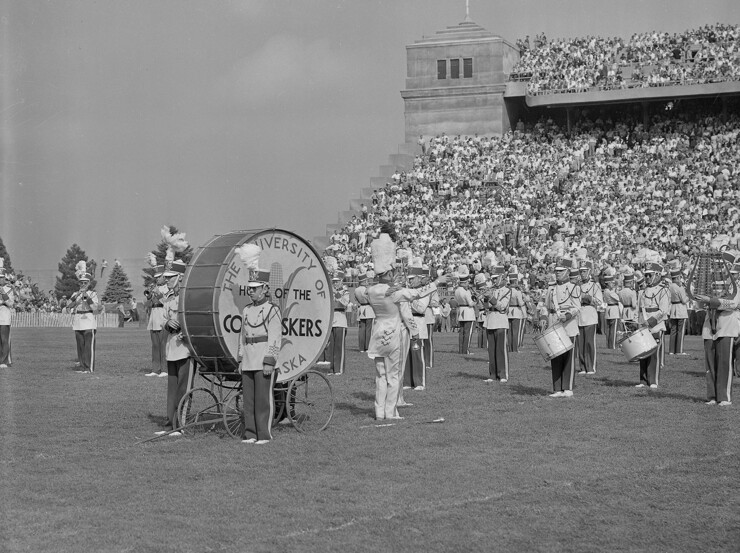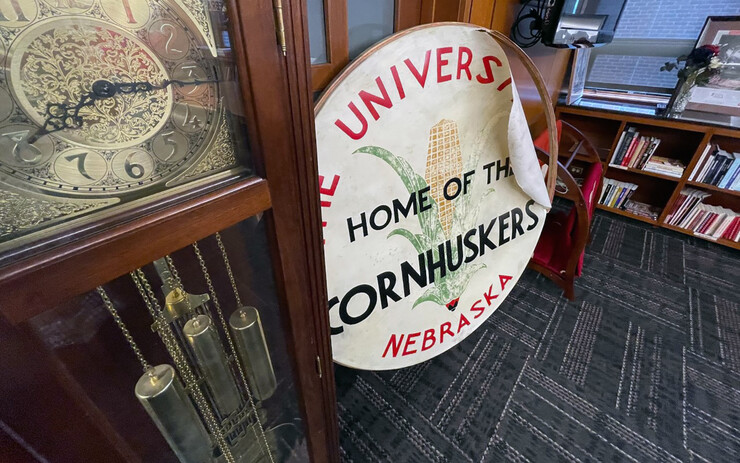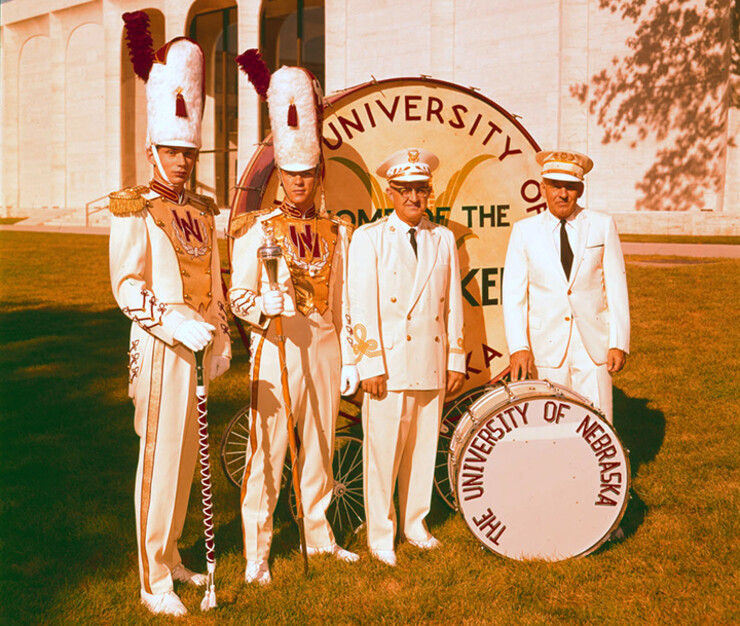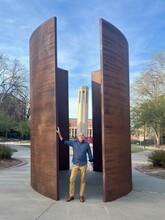· 5 min read
Alumni, band collab returns historic drum to campus
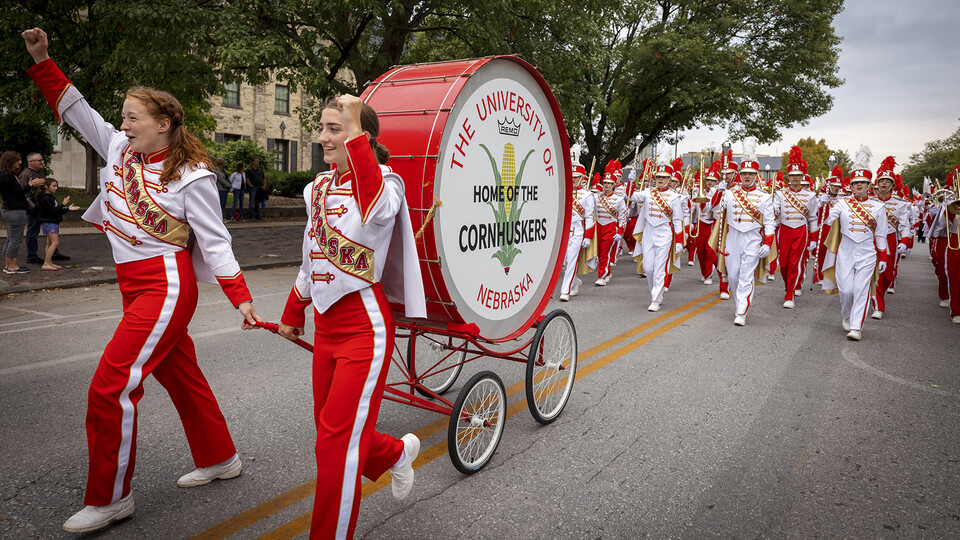
The drumbeats of campus life are just a little bigger this fall at Dear Old Nebraska U.
Through a collaboration between the Nebraska Alumni Association and Cornhusker Marching Band, the university’s five-foot-tall bass drum (known colloquially as a “Big Bertha” drum) has been refurbished and returned to service on campus.
“The drum was well-used through the years and, while it still looked great, it had fallen into a state of disrepair,” said Andy Washburn, associate executive director of operations for the Alumni Association. “Over the years, it had become a part of the alumni center’s collection. When plans for the university’s N150 celebration came together, we decided it was the perfect time to repair the drum and return it to campus in all its glory.”
Used primarily as a decorative piece in parades and at campus events, the instrument has a rich 89 year history that includes the “World’s Biggest Drum” of Purdue University and a disappearing act in 1941.
“It all started in when (Chancellor) John K. Selleck went on an East Coast/Ohio Valley tour,” Washburn said. “He saw these big drums at Purdue and Northwestern and wanted to get one for Nebraska.”
In 1932, the drum (along with two glockenspiels and a half-dozen specialized horns) was purchased and first used during a home basketball game against Creighton University. It was used consistently at campus events through the 1941 Tournament of Roses Parade and Rose Bowl game against Stanford.
Then, the drum faded from public view.
“Reports state that it was either misplaced or went into storage,” Washburn said. “It came back in an interesting fashion in 1961.”
The drum’s return marked the introduction of the university’s first baton twirler, a student named Joyce Burns. As the drum rolled across the turf of Memorial Stadium on Sept. 23, 1961, Burns burst forth from it (via a false, paper drum head) and started to perform.
Burns’ appearance marked the start of the Cornhusker Marching Band using baton twirlers in performances — a tradition that continues today (though, without them bursting from drum heads).
The drum continued to be used during games, including the start of the Memorial Stadium sellout streak on Nov. 3, 1962. It eventually was retired, became a part of the Nebraska Alumni Association’s collection and put on display for visitors to enjoy.
“The drum lived here for quite some time,” Washburn said. “I remember it being on display when I was an alumni center intern in the 1990s.”
An alumnus of the Cornhusker Marching Band, Washburn turned to those he trusted to help guide the percussion instrument’s repair — Tony Falcone and Doug Bush, two, long-time leaders with the band.
“I really had no idea where you would go to order five-foot tall drum heads,” Washburn said. “They guided us to Remo Drums, a company that makes the heads for the other large, historic drums in college football — like Purdue, Texas and Missouri.”
Washburn provided artwork to the company, painstakingly recreating E. F. Jackson’s hand-painted design on the original drum head into a digital file. He also sought help from a neighbor, Josh McCain, a welder, to help refurbish the cart that the drum rides in.
The project came together in late 2019 when student leaders from the band helped Washburn replace the old drum heads with the modern versions. The drum was unveiled to the public on Feb. 14, 2019, the university’s charter day.
“We had hoped it would be in the homecoming parade in 2020, but then the pandemic happened,” Washburn said. “We were able to show it off at homecoming this year — in the parade and at a few events. It got some great reactions and people really wanted to get their photo with it.”
The drum will continue to be used for campus events and by the marching band (as needed). It is also available for campus groups to use for free via request to the alumni association.
“It’s doesn’t have great sound, so its days as a musical instrument are behind it,” Washburn said. “But the drum makes for an outstanding centerpiece and it is a great artifact in our university’s rich history.
“As an alumni of the band and this university, it was really great to help be a part of the drum’s history and protect its legacy for generations of Huskers to come.”
